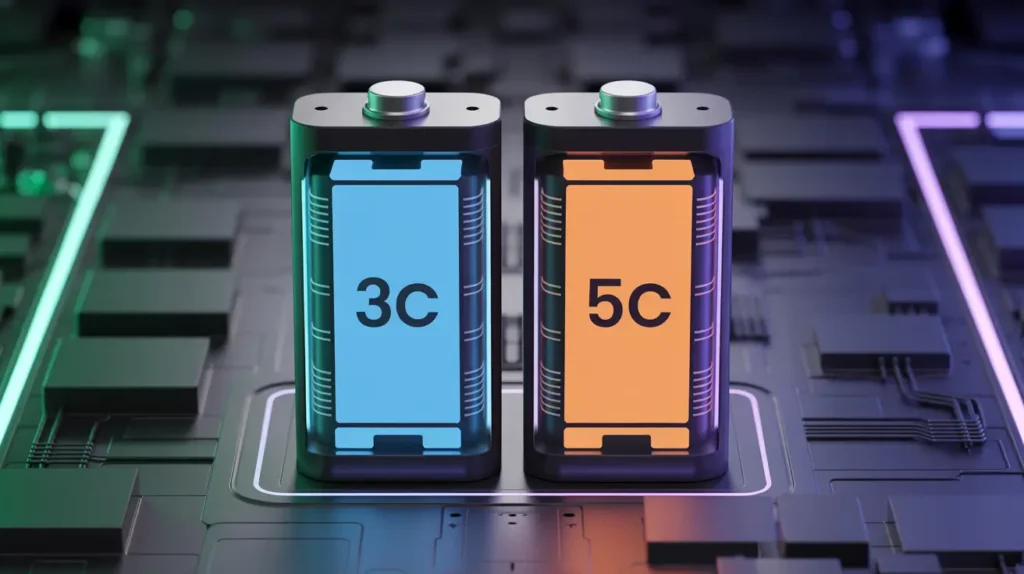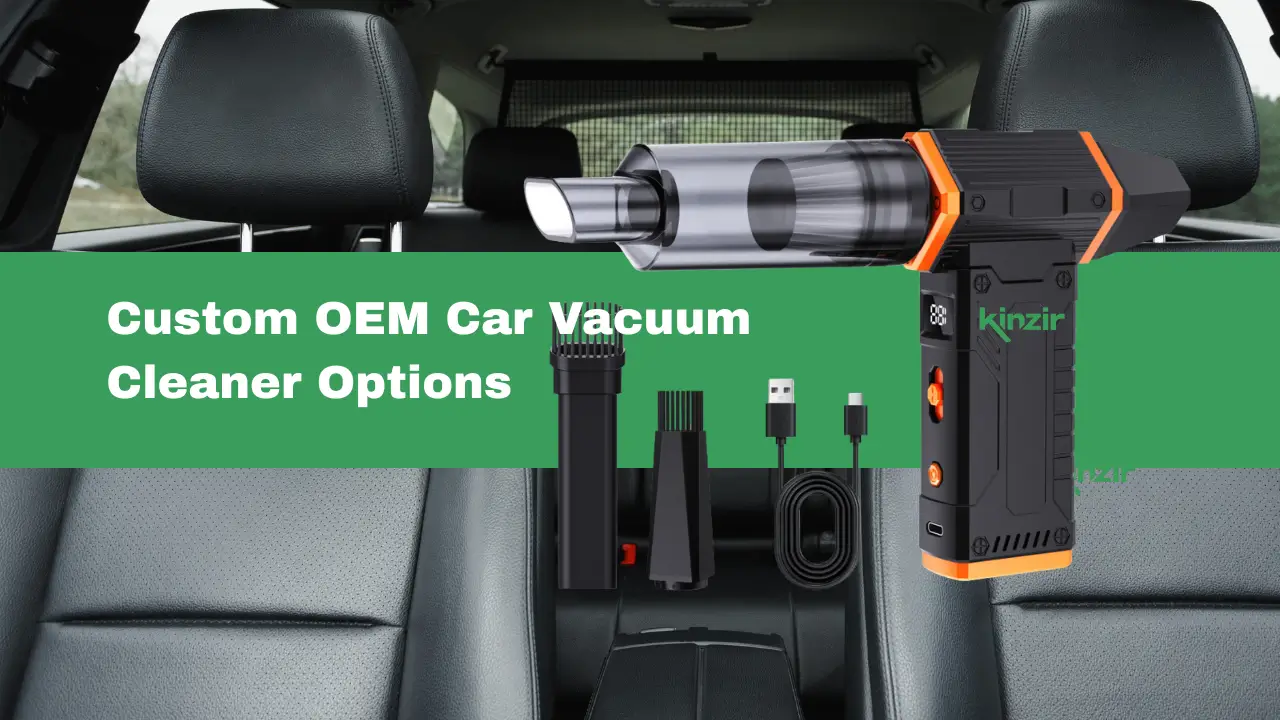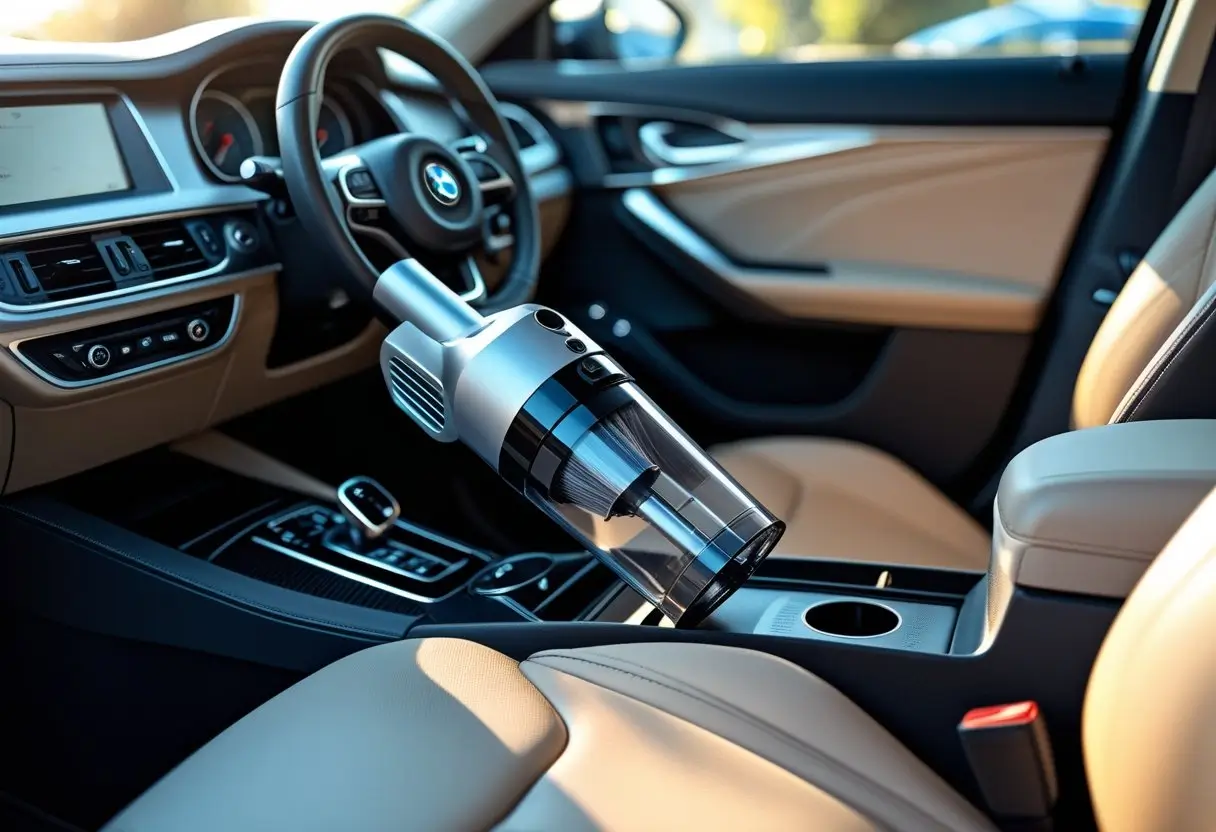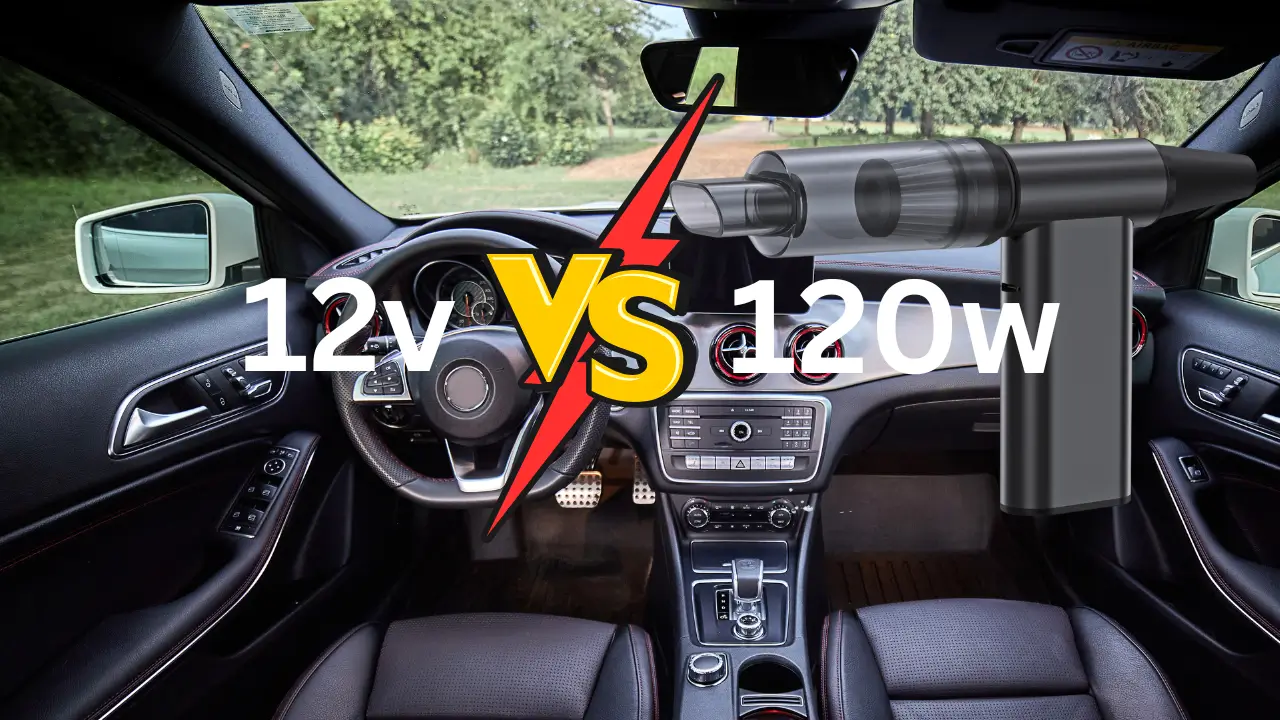Battery C-ratings determine how quickly a battery can safely discharge its stored energy, with higher numbers indicating faster discharge capabilities. A 3C battery can discharge its full capacity in 20 minutes, while a 5C battery accomplishes the same task in just 12 minutes. This fundamental difference affects everything from device performance to safety considerations.

The C-rating specification directly impacts which applications each battery type suits best. Lithium-ion battery C-rate calculations reveal the maximum current output, helping users match batteries to their specific power requirements. Understanding these discharge characteristics prevents equipment damage and ensures optimal performance.
Choosing between 3C and 5C batteries requires evaluating discharge current needs, performance expectations, and safety requirements. This comparison examines how C-rating affects real-world applications, from portable cleaning devices to cooling systems, plus guidance on selecting the right specification for specific use cases.
What C-Rating Means For Battery Discharge
C-rating directly determines how much current a battery can safely discharge. The rating multiplies by the battery’s capacity to calculate maximum discharge current.
A 3C battery can discharge at three times its capacity rating. A 1000mAh 3C battery delivers up to 3000mA (3A) of current safely.
A 5C battery provides higher discharge capability. The same 1000mAh battery with 5C rating outputs up to 5000mA (5A) of current.
Li-ion chemistry typically supports lower C-ratings than other battery types. Most standard Li-ion cells operate between 1C to 3C for continuous discharge.
LiPo cells excel at high discharge applications. These batteries commonly achieve 5C ratings or higher due to their construction and chemistry.
| Battery Type | Typical C-Rating Range |
|---|---|
| Standard Li-ion | 1C – 3C |
| LiPo cells | 3C – 30C+ |
| High discharge batteries | 10C – 50C+ |
Battery current rating affects device performance directly. Higher C-ratings enable power-hungry applications like RC vehicles and power tools.
High discharge batteries use specialized designs to handle extreme current flow. They feature thicker conductors and optimized electrolyte formulations.
The C-rating represents continuous discharge capability. Many batteries handle brief burst currents above their rated C-rating for short periods.
Battery discharge rate impacts voltage stability. Higher current draw causes voltage sag, reducing available power to connected devices.
Calculating Discharge Current For 3C And 5C
The discharge current for both 3C and 5C batteries depends on the battery’s capacity rating measured in ampere-hours (Ah). The C-rating represents how many times the battery capacity can be discharged per hour.
3C battery rating means the battery can discharge at three times its capacity. A 3C battery pack with 2000mAh capacity delivers 6000mA or 6A maximum discharge current.
5C battery rating allows discharge at five times the battery capacity. The same 2000mAh battery with 5C rating provides 10000mA or 10A maximum discharge current.
Battery capacity calculation follows this formula:
- Discharge Current = C-rating × Battery Capacity
- 3C × 2Ah = 6A
- 5C × 2Ah = 10A
| Battery Type | Capacity | C-Rating | Max Discharge Current |
|---|---|---|---|
| 3C Battery | 2000mAh | 3C | 6A |
| 5C Battery | 2000mAh | 5C | 10A |
| 3C Battery | 5000mAh | 3C | 15A |
| 5C Battery | 5000mAh | 5C | 25A |
Battery ampere rating directly affects the maximum safe discharge current. Higher capacity batteries with the same C-rating deliver proportionally higher discharge currents.
A 5C battery pack delivers 67% more current than a 3C battery pack of identical capacity. This increased current capability makes 5C batteries suitable for high-drain applications requiring rapid power delivery.
Why C-Rating Affects Performance And Safety
C-rating directly determines how much current a battery can safely deliver without overheating or suffering damage. A 3C battery provides three times its capacity in amperage, while a 5C battery delivers five times its capacity.
Motor Performance Impact Higher C-ratings enable motors to draw more power during acceleration and peak loads. A 5C high-discharge Li-ion battery supplies greater current to motors compared to 3C variants. This translates to faster acceleration and better performance under demanding conditions.
Continuous vs Peak Discharge The continuous discharge rating represents sustained current output without temperature buildup. Peak discharge current allows brief bursts of higher amperage. Exceeding these limits causes voltage drops and reduced motor efficiency.
Safety Considerations Operating beyond C-rating limits generates excessive heat and accelerates cell degradation. Modern Battery Management Systems (BMS) monitor discharge rates and implement over-discharge protection to prevent damage.
Performance Trade-offs
| C-Rating | Advantages | Disadvantages |
|---|---|---|
| 3C | Longer runtime, lower cost | Limited peak power |
| 5C | Higher performance, better acceleration | Shorter runtime, higher cost |
Temperature Management High discharge rates increase internal resistance and heat generation. Proper thermal management becomes critical with higher C-ratings to maintain safety and performance.
The BMS continuously monitors cell temperatures and current flow. It reduces power output when limits are approached to protect the high-discharge Li-ion battery from thermal runaway.
Performance Comparison: 3C Vs 5C Batteries

3C batteries deliver moderate discharge rates with extended runtime, while 5C batteries provide higher burst power at the cost of shorter operating time. Heat generation increases significantly with 5C discharge rates, requiring enhanced thermal management solutions.
Discharge Current And Runtime Trade-Offs
The fundamental difference between 3C and 5C batteries lies in their discharge current capabilities and resulting runtime performance. A 3C battery can discharge at three times its capacity rating, while a 5C battery delivers five times its Ah rating in current output.
Runtime calculations show clear trade-offs between burst power and steady draw applications. A 1000mAh 3C battery provides 3A for approximately 20 minutes, whereas the same capacity 5C battery delivers 5A for only 12 minutes.
Battery power output scales directly with C-rate increases. However, battery efficiency decreases as discharge rates climb higher. 5C batteries experience voltage sag under load, reducing actual power delivery compared to theoretical calculations.
Applications requiring sustained power benefit from 3C configurations. Short-duration, high-power demands favor 5C batteries despite their reduced runtime capabilities.
Thermal Impact And Heat Management
Heat generation increases exponentially with higher C-rates, making thermal management critical for 5C battery performance. Internal resistance causes energy loss that converts to heat during discharge cycles.
Temperature rise patterns differ significantly between 3C and 5C operations:
- 3C batteries: 15-25°C temperature increase
- 5C batteries: 35-50°C temperature increase
Cooling strategies become essential for 5C applications. Active cooling systems, heat sinks, and thermal interface materials help maintain optimal operating temperatures. Without proper thermal management, 5C batteries experience rapid performance degradation.
Battery efficiency drops substantially when temperatures exceed 60°C. 5C batteries require more sophisticated cooling solutions, adding system complexity and cost compared to 3C alternatives.
Cycle Life Implications
High C-rate discharge significantly impacts battery lifespan, with 5C batteries experiencing accelerated degradation compared to 3C alternatives. Battery capacity retention decreases faster under high-current conditions.
Cycle life comparisons reveal substantial differences:
- 3C discharge: 800-1200 cycles to 80% capacity
- 5C discharge: 400-600 cycles to 80% capacity
The trade-off between burst current capability and longevity becomes apparent in long-term applications. 5C batteries may require replacement twice as frequently as 3C batteries in similar applications.
Battery chemistry affects cycle life impact differently. Lithium iron phosphate cells handle high C-rates better than standard lithium-ion chemistries. However, all battery types show reduced lifespan at 5C discharge rates compared to 3C operations.
Common Applications

Different C-ratings excel in specific applications based on their power delivery characteristics and cost considerations. The 3C rating suits moderate-drain devices while 5C batteries power high-performance equipment requiring instant bursts of energy.
Drones And Remote-Control Vehicles
RC cars benefit from 3C batteries during casual driving and basic racing scenarios. The moderate discharge rate provides sufficient power for standard motors without the premium cost of higher-rated cells.
Racing drones require 5C batteries for aggressive maneuvers and competitive flying. These high-performance quadcopters demand instant power delivery during rapid acceleration, sharp turns, and vertical climbs.
Typical power requirements:
- Standard quadcopters: 3C adequate for gentle flying
- Racing drones: 5C necessary for competitive performance
- RC cars: 3C suitable for recreational use
The flight time versus performance trade-off becomes critical in drone applications. 5C batteries deliver superior power but may reduce overall flight duration compared to 3C alternatives.
Cordless Power Tools And Portable Equipment
Cordless power tools demonstrate varied C-rating requirements based on application intensity. Light-duty tools like screwdrivers and LED flashlights operate effectively with 3C batteries.
Heavy-duty equipment such as circular saws and impact drivers require 5C batteries. These tools demand high current draw during startup and under load conditions.
Tool categories by C-rating:
- 3C suitable: Screwdrivers, flashlights, radios
- 5C required: Circular saws, grinders, hammer drills
Professional contractors often choose 5C batteries for consistent performance across all tool types. This standardization eliminates compatibility concerns and ensures adequate power reserves.
Backup Power And UPS Systems
Uninterruptible Power Supplies typically utilize 3C batteries for standard office equipment protection. These systems prioritize runtime over instantaneous power delivery for computers and networking equipment.
Critical infrastructure UPS systems may require 5C batteries when protecting high-power servers or medical equipment. The higher discharge rate ensures adequate power during peak demand periods.
UPS applications:
- Home/office systems: 3C provides sufficient backup duration
- Server rooms: 5C handles multiple equipment loads
- Medical facilities: 5C ensures reliable emergency power
Battery bank sizing calculations must account for both continuous load requirements and peak demand scenarios when selecting appropriate C-ratings.
Batteries For Portable Cleaning And Cooling Devices
Portable cleaning and cooling devices typically require batteries with different discharge characteristics based on their power demands. Electric air dusters need short bursts of high power, while mini turbo fans require sustained moderate power output for extended cooling periods.
Electric Air Dusters
Electric air dusters require high-current batteries to generate sufficient airflow for removing dust and debris. These devices typically draw 15-25 amps during operation, making 5C batteries the preferred choice for most models.
The high discharge rate capability of 5C batteries ensures consistent air pressure throughout the cleaning session. Most electric air dusters operate in short bursts of 10-30 seconds, which aligns well with the 5C battery’s ability to deliver maximum power quickly.
Battery specifications for electric air dusters:
- Minimum discharge rate: 3C
- Optimal discharge rate: 5C
- Typical capacity: 2000-3000mAh
- Voltage: 18V-20V
Some lightweight models can function adequately with 3C batteries, though users may notice reduced air pressure and shorter effective cleaning range. Professional-grade air dusters consistently require 5C batteries to maintain industrial-strength performance standards.
Mini Turbo Jet Fans
Mini turbo jet fans operate at moderate power levels for extended periods, making them suitable for both 3C and 5C battery configurations. These devices typically draw 8-15 amps depending on speed settings and blade design.
3C batteries work effectively for standard cooling applications where users prioritize longer runtime over maximum airflow. These batteries provide 2-4 hours of continuous operation at medium speed settings.
5C batteries deliver superior performance for high-speed operation and rapid cooling requirements. They enable maximum fan speed for 1-2 hours while maintaining consistent airflow pressure.
Most mini turbo fans include variable speed controls that automatically adjust power consumption based on battery capacity. This feature allows users to optimize performance regardless of whether they use 3C or 5C batteries.
Portable Car Vacuum Cleaners
Portable car vacuum cleaners have varying power requirements based on motor size and suction strength. Handheld models typically use 3C batteries, while larger upright units require 5C batteries for adequate performance.
Handheld car vacuums drawing 10-15 amps operate efficiently with 3C batteries, providing 15-25 minutes of continuous cleaning time. These batteries offer sufficient power for routine interior cleaning tasks.
Larger portable vacuums with brush rolls and higher suction power draw 20-30 amps during operation. These models require 5C batteries to maintain consistent suction strength and prevent motor strain.
Power requirements by vacuum type:
- Handheld models: 3C batteries (adequate)
- Wet/dry models: 5C batteries (required)
- Brush roll models: 5C batteries (required)
Professional detailing vacuums consistently require 5C batteries to handle heavy-duty cleaning tasks and maintain optimal suction performance throughout extended use sessions.
How To Choose The Right C-Rating
Selecting the appropriate C-rating requires balancing power delivery needs with runtime requirements and matching specifications to device demands. Environmental factors and safety protocols also influence the optimal choice.
Balancing Burst Power With Runtime Needs
Higher C-ratings deliver more instantaneous power but typically reduce overall runtime capacity. A 5C battery can discharge its full capacity in 12 minutes, while a 3C battery takes 20 minutes.
Devices requiring sudden power spikes benefit from higher C-ratings. RC aircraft during takeoff or power tools under heavy load demand this burst capability.
Runtime-focused applications favor lower C-ratings. Flashlights, portable electronics, and backup power systems prioritize sustained operation over peak performance.
The trade-off becomes critical when sizing packs for runtime vs weight. Higher C-rated cells often weigh more per amp-hour, affecting portable device design.
Battery charging and discharging patterns also differ. Lower C-rated batteries typically handle deeper discharge cycles better, extending operational time between charges.
Matching C-Rating To Device Specifications
Device load curves determine minimum C-rating requirements. Motors drawing 10 amps from a 2Ah battery need at least 5C capability to prevent voltage sag.
Continuous versus peak current demands require different approaches. A device with 3A continuous draw but 8A peaks needs adequate headroom above the continuous rating.
Matching battery specs to device load curves prevents performance degradation. Insufficient C-rating causes voltage drops, reducing efficiency and potentially damaging equipment.
Charging protocols like CC-CV (constant current-constant voltage) work differently across C-ratings. Higher C-rated batteries often accept faster charging currents during the CC phase.
Balance charging becomes more critical with higher C-ratings. These batteries generate more heat and stress, requiring careful cell monitoring during charging cycles.
Environmental And Safety Considerations
Temperature extremes affect C-rating performance significantly. Cold conditions reduce effective C-rating by 20-40%, while heat increases internal resistance and fire risk.
Safety margins become essential with higher C-ratings. A 5C battery operating at maximum discharge generates substantial heat, requiring thermal management systems.
Recharge time for C-rated batteries varies with charging infrastructure. Higher C-rated cells often accept faster charging but need appropriate chargers and cooling.
Environmental regulations may restrict certain C-ratings in specific applications. Aviation and medical devices often have strict power density limitations.
Storage and handling requirements intensify with higher C-ratings. These batteries require fireproof containers and temperature monitoring during transport and storage.
Top 3C And 5C Battery Models
Kinzir leads the market with specialized battery series designed for different discharge rate requirements. The 3C series delivers reliable performance for moderate power applications, while the 5C series handles high-drain scenarios effectively.
Overview Of Kinzir 3C Battery Series
The Kinzir 3C battery series targets applications requiring moderate discharge rates with consistent performance. These batteries maintain stable voltage output during continuous 3C discharge cycles.
The series includes models ranging from 2000mAh to 5000mAh capacity. Each model features lithium-ion chemistry with built-in protection circuits. The batteries operate effectively in temperatures from -10°C to 60°C.
Kinzir 3C batteries deliver approximately 500-800 charge cycles before capacity drops to 80%. The cells maintain low internal resistance throughout their lifecycle. They support standard charging protocols with maximum 1C charge rates.
Common applications include portable electronics, LED lighting systems, and backup power units. The batteries measure standard 18650 dimensions for easy integration. They meet safety certifications including UL1642 and UN38.3 standards.
Overview Of Kinzir 5C Battery Series
Kinzir 5C batteries handle high-drain applications requiring rapid power delivery. These cells sustain continuous 5C discharge without significant voltage sag or overheating.
The series offers capacities from 1500mAh to 3500mAh across different models. Each battery incorporates advanced thermal management and reinforced construction. The cells feature enhanced electrolyte formulations for high-rate performance.
These batteries complete 300-600 charge cycles while maintaining 80% capacity retention. They support fast charging up to 2C rates with appropriate chargers. Internal resistance remains low even during peak discharge periods.
Primary applications include power tools, electric vehicles, and emergency systems. The batteries utilize standard cylindrical formats for compatibility. They exceed automotive and industrial safety requirements.
Feature Comparison Table
| Feature | Kinzir 3C Series | Kinzir 5C Series |
|---|---|---|
| Discharge Rate | 3C continuous | 5C continuous |
| Capacity Range | 2000-5000mAh | 1500-3500mAh |
| Cycle Life | 500-800 cycles | 300-600 cycles |
| Charge Rate | 1C maximum | 2C maximum |
| Operating Temperature | -10°C to 60°C | -10°C to 60°C |
| Internal Resistance | 25-35 mΩ | 15-25 mΩ |
| Typical Applications | Electronics, LED systems | Power tools, EVs |
The 3C series prioritizes capacity and longevity for sustained use. The 5C series emphasizes power output for demanding applications. Both series maintain Kinzir’s quality standards and safety certifications.
Purchasing And Custom Options
Both 3C and 5C batteries are available through OEM and ODM manufacturers with flexible order quantities and pricing structures. Lead times vary significantly between standard and custom battery configurations.
OEM And ODM Services For Small Orders
OEM battery manufacturers provide standardized 3C and 5C battery solutions with minimal customization options. These suppliers typically accept orders starting from 100-500 units depending on cell type and voltage requirements.
ODM battery manufacturers offer complete custom battery pack design services for both discharge rates. They modify cell configurations, protection circuits, and housing specifications according to client needs.
Small order quantities for OEM C-rated batteries usually range from 50-200 units with 2-3 week lead times. Custom 5C configurations require higher minimum orders of 200-1000 units due to specialized manufacturing processes.
ODM services include battery management system integration, connector customization, and thermal management solutions. Most manufacturers provide prototyping services for orders above 100 units before full production runs.
Volume Pricing Tiers And Lead Times
Bulk order pricing follows standard tier structures across most manufacturers:
| Order Quantity | 3C Battery Price Reduction | 5C Battery Price Reduction | Lead Time |
|---|---|---|---|
| 100-500 units | 5-8% | 3-5% | 2-3 weeks |
| 500-2000 units | 12-15% | 8-12% | 3-4 weeks |
| 2000+ units | 20-25% | 15-20% | 4-6 weeks |
5C batteries maintain higher base pricing due to specialized manufacturing requirements and performance testing procedures. Volume discounts apply less aggressively compared to standard 3C configurations.
Lead times extend during peak manufacturing periods from September through December. Custom battery packs add 1-2 weeks to standard delivery schedules regardless of discharge rating.
Order Process And Technical Support
The ordering process begins with specification sheets detailing voltage, capacity, discharge rate, and physical dimensions. Manufacturers require detailed application information to recommend appropriate 3C or 5C configurations.
Technical support includes battery selection guidance, charging system recommendations, and safety certification assistance. Most suppliers provide engineering consultation during the specification phase at no additional cost.
Quality assurance protocols involve sample testing, production batch inspection, and performance validation. Manufacturers typically provide test reports, safety certifications, and compliance documentation with each shipment.
Payment terms vary from 30-50% deposits for custom orders to net 30 payment schedules for established customers. International orders require additional lead time for shipping and customs clearance procedures.
Resources And Support
Battery manufacturers and suppliers provide comprehensive documentation and technical support for 3C and 5C battery selection. Quality certifications and testing protocols ensure proper battery performance verification.
Downloadable Datasheets And Certification PDFs
Most battery manufacturers offer detailed datasheets that specify discharge rates, capacity ratings, and thermal characteristics for both 3C and 5C batteries. These documents typically include performance curves, temperature coefficients, and cycle life data.
Key datasheet specifications include:
- Continuous discharge current limits
- Peak discharge capabilities
- Internal resistance measurements
- Operating temperature ranges
Certification documents provide UL, CE, and UN38.3 test results. Safety certifications verify that batteries meet transportation and handling requirements. Quality certificates demonstrate compliance with ISO 9001 manufacturing standards.
Battery suppliers maintain online portals where engineers can download current product specifications. Technical bulletins address common application questions and provide updated safety guidelines for high-discharge applications.
Quality Assurance And Test Procedures
Battery testing protocols verify 3C and 5C discharge performance through standardized procedures. Manufacturers conduct capacity testing at specified discharge rates to confirm rated performance levels.
Standard test procedures include:
- Cycle life testing at maximum discharge rates
- Thermal performance evaluation
- Internal resistance measurement
- Safety abuse testing
Quality control processes monitor production consistency for high-discharge batteries. Statistical process control ensures that each battery meets specified discharge current tolerances. Incoming inspection procedures verify component quality before assembly.
Third-party testing laboratories provide independent verification of battery performance claims. These facilities conduct comparative testing between different manufacturers’ 3C and 5C products.
Contact Information For Technical Inquiries
Battery manufacturers provide dedicated technical support teams for high-discharge applications. Field application engineers assist with battery selection and integration requirements for specific projects.
Support channels typically include:
- Technical hotlines staffed by engineers
- Online chat systems for immediate assistance
- Email support for detailed technical questions
- Regional sales representatives for local support
Many suppliers offer application notes and design guides specifically for 3C and 5C battery implementations. Technical webinars address common design challenges and best practices for high-current applications.
Distributors maintain technical staff who understand regional requirements and can provide localized support. They coordinate with manufacturers to resolve complex technical issues and provide rapid response for urgent applications.
Summary And Next Steps
The 3C rating delivers 3-hour discharge capacity with moderate power output, while 5C provides higher current delivery in 1.2 hours with increased heat generation. Project requirements for power density, runtime, and thermal management determine the optimal choice.
Key Takeaways On 3C Vs 5C Ratings
3C batteries discharge their full capacity over 3 hours, making them suitable for applications requiring steady, moderate power output. They generate less heat during operation and typically offer longer cycle life.
5C batteries deliver the same energy in 1.2 hours, providing higher instantaneous power. They excel in applications demanding quick bursts of energy but require more robust thermal management systems.
| Rating | Discharge Time | Power Output | Heat Generation | Typical Use |
|---|---|---|---|---|
| 3C | 3 hours | Moderate | Lower | Steady applications |
| 5C | 1.2 hours | High | Higher | Peak power demands |
Cost differences typically favor 3C batteries due to simpler manufacturing requirements. 5C batteries command premium pricing due to enhanced internal construction and materials.
How To Select And Order The Best Fit For Your Project
Engineers should first calculate peak power requirements and average power consumption for their application. Projects requiring continuous operation favor 3C ratings, while those needing intermittent high power benefit from 5C capabilities.
Thermal considerations play a crucial role in selection. 5C batteries require heat sinks, fans, or liquid cooling systems in most applications. 3C batteries often operate adequately with basic ventilation.
Space constraints may influence the decision. 5C batteries can deliver more power from smaller battery packs, reducing overall system size. 3C configurations require larger capacity to achieve equivalent peak performance.
Sample quantities should be requested before committing to production volumes. Most manufacturers provide engineering samples for validation testing and thermal analysis.
Links To Detailed Product Pages And Datasheets
Leading manufacturers maintain comprehensive online catalogs with downloadable datasheets, performance curves, and application notes. These resources contain essential specifications for thermal characteristics, cycle life data, and safety certifications.
Distributor websites offer parametric search tools to filter batteries by C-rating, capacity, voltage, and form factor. Many provide side-by-side comparison charts for different models and manufacturers.
Technical support teams at battery manufacturers assist with application-specific recommendations and custom configurations. They provide thermal modeling data and integration guidance for complex projects.
Engineering forums and industry publications maintain updated lists of qualified suppliers and emerging battery technologies. These resources help identify new products and alternative solutions for specific applications.
Frequently Asked Questions
Battery C ratings represent discharge capacity multipliers, with 3C and 5C batteries offering different performance characteristics for specific applications. Understanding these ratings helps users select appropriate batteries for their devices and calculate optimal discharge parameters.
What defines the ‘C’ rating in battery specifications?
The C rating indicates how many times the battery capacity can be discharged in one hour. A 3C rating means the battery can discharge at three times its capacity per hour. A 5C rating allows discharge at five times the capacity per hour.
For a 2000mAh battery, a 3C rating permits 6000mA discharge current. The same battery with a 5C rating allows 10000mA discharge current. This rating directly correlates to the maximum safe continuous discharge rate.
How can you determine the maximum discharge rate for a battery?
Multiply the battery capacity by the C rating to find maximum discharge current. A 1500mAh battery with 3C rating has a maximum discharge of 4500mA. A 1500mAh battery with 5C rating allows 7500mA discharge.
Check the manufacturer specifications for continuous versus burst discharge ratings. Some batteries list different C ratings for sustained operation versus short-term peak performance. Temperature conditions also affect actual achievable discharge rates.
What factors influence the performance differences between batteries with different ‘C’ ratings?
Internal resistance affects discharge performance between 3C and 5C batteries. Lower internal resistance in 5C batteries allows higher current flow with less voltage drop. Cell chemistry and electrode design determine maximum safe discharge rates.
Temperature management becomes more critical at higher C ratings. 5C batteries generate more heat during discharge than 3C batteries. Battery construction quality and manufacturing tolerances impact actual performance versus rated specifications.
How is the ‘C’ rating related to the overall lifespan and efficiency of a battery?
Higher C ratings typically result in reduced cycle life when batteries operate at maximum discharge rates. A 5C battery discharged at full capacity experiences more stress than a 3C battery at full capacity. Operating batteries below their maximum C rating extends lifespan.
Efficiency decreases at higher discharge rates due to increased internal losses. 3C batteries often maintain better efficiency during moderate discharge compared to 5C batteries. Heat generation increases with higher C ratings, reducing overall energy efficiency.
In practical terms, what implications does a higher ‘C’ rating have on the device’s performance?
Devices requiring high power bursts benefit from 5C batteries over 3C batteries. RC vehicles, power tools, and high-performance electronics perform better with higher C ratings. 5C batteries maintain voltage stability during demanding applications.
3C batteries suffice for devices with steady power consumption. Consumer electronics, flashlights, and moderate-use applications work well with 3C ratings. Higher C ratings provide performance headroom but may be unnecessary for low-power devices.
What are the calculation methods for determining the appropriate ‘C’ rate for a specific application?
Calculate peak current requirements by dividing maximum power consumption by operating voltage. Compare this current to battery capacity to determine needed C rating. Add 20-30% safety margin above calculated requirements.
Consider duty cycle patterns when selecting C ratings. Devices with intermittent high power needs may require higher C ratings than continuous power calculations suggest. Factor in voltage drop under load when determining minimum acceptable C rating for reliable operation.




